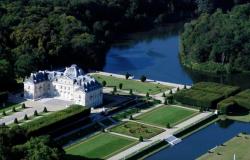Sometimes perceived as distant and impalpable, Europe nevertheless helps many actors in Indre in a concrete way, and not only through the Common Agricultural Policy (CAP). Among the European Structural and Investment Funds (EFSI), there is one well known to the economic world: the European Fund for Regional Development (ERDF). This supports the economy and finances development projects across the region. Here are three examples of economic players in the department who benefit, for the period 2021-2027, from these envelopes, earmarked by the Regional Council.
The Departmental Housing Information Agency. From 1er January 2023 to December 31, 2024, Adil 36 benefits from an envelope of up to €400,000 for its France Rénov’ advice space (1), or around 50% of the total amount necessary to carry out the project. His goal : “Inform and raise awareness among the general public about energy management and the use of renewable energies”, according to the summary table presented by the Region on its website. A funding “consequent” for Christine Fleuret, director of Adil 36, which should make it possible to “respond to the increasing demand for energy renovation work”.
Christine Fleuret, director of Adil 36.
© (Photo archives NR, Jean-Sébastien Le Berre)
In what way exactly? With “awareness and support actions in work programs, through information and personalized advice”. Since the start of this program, Adil has thus “doubled the number of households supported”passing “3,000-3,500 households” when it was still called “Info-Energy Space” has “7,000-8,000” currently, and a team of three to six full-time equivalents (FTE). “But these remain precarious funds which are allocated for two years to the overall action of France Rénov, the rest of the expenses (personnel, for example) are borne by partners, specifies Christine Fleuret. However, as it is an effective program, there are ongoing negotiations to make it continue through other means. »
1) Formerly “Energy info space”, created in 2001 by Adil, this allows you to answer questions about insulation, heating, financial aid, etc.
Aerocenter. This regional association, based at Châteauroux-Déols airport, brings together 136 companies from the aeronautics, space and defense sectors. It operates with four permanent employees, plus a few volunteers. “Originally, it was a group of industrialists who organized themselves in order to structure the sector in the region and to promote know-how and synergies”explains its director, Claire Oger, who indicates that it works “with 50% self-financing, the remaining 50% coming from the Region and these ERDF funds”.
Claire Oger (left), replaced Christine Denis (right) as director of the Aérocentre association, chaired by Christophe Bonneau.
© (Photo NR, Benjamin Abgrall)
Over three years, from 1er January 2023 to December 31, 2025, Europe must pay Aérocentre €410,580, under the ERDF budget line “Competitive Europe”. This funding allows the association to develop all the actions it carries out: “Information, support, promotion of professions, innovation…” In short, “the structuring of the sector”which should enable it to achieve its objectives: “strengthening sustainable growth and competitiveness of SMEs, and, indeed, job creation”.
The Open Mixed Union Public initiative network of Indre. Responsible for the deployment of very high speed optical fiber (THD) in Indre, this “SMO Rip 36”, administered by a union committee made up of three colleges (2), has benefited from several Feder subsidies in recent years.

Christophe Courtemanche, director of the Open Joint Union Public Initiative Network of Indre (SMO Rip 36).
© (Photo archives NR, Jean-Sébastien Le Berre)
Christophe Courtemanche, its director, details them: “A first of €5.485 million for the first phase of deployment between 2017 and 2021 (the first 41 municipalities), a second on the React EU program for milestones 1 and 2 of the second FttH phase (3) in an amount of €4,360 million and therefore, the last, in an amount of €5.101 million, for milestones 3 and 4 of the second FttH phase allowing complete 100% FttH coverage of the territory at the end of 2025 outside the area deployed by Orange . »
(2) Department, Region and Public Intermunicipal Cooperation Establishments (EPCI) with the Department’s own taxation.
(3) Fiber serving several subscribers, companies and individuals, who share the speed between them from the network pooling point.
13.553 million euros in European funds allocated to Indre
In total, over the period 2021-2027, the Centre-Val de Loire Region directs 13.553 million euros (M€) of European funds to Indre. These are divided into three distinct envelopes:
> €6.595 million from the ERDF. They benefit eight players in the local economy: Adil, Aérocentre and SMO Rip 36, but also the La Châtre company Aluminum Fabrication Diffusion; the Joint Development Union of Brenne, Creuse, Anglin and Claise; the Joint Syndicate for the development of the Bouzanne basin; the Intercommunal Syndicate for the development of the Théols basin and the Mixed Syndicate of the Modon, Tourmente and Indrois watershed upstream.
> €2.772 million from the FSE +. These benefit the Region itself, for the training of job seekers.
> €4.186 million from the Leader. Coming from the European Agricultural Fund for Rural Development (EAFRD), the funds from the Leader program (Link between action to develop the rural economy) represent €4,186,000 for Indre over the period 2023-2027. There are five Local Action Groups (LAGs) which are responsible for administering the funds received: Pays Castelroussin – Valençay, Brenne, La Châtre, Issoudun and Val de Creuse-Val d’Anglin.








